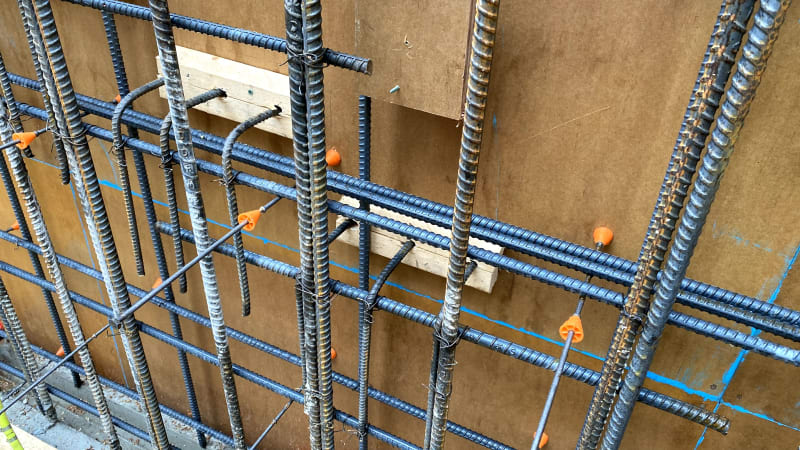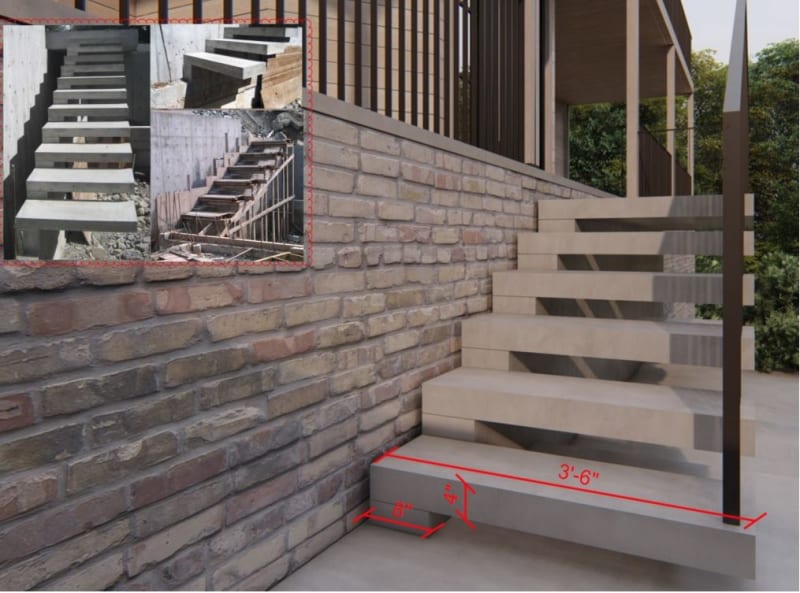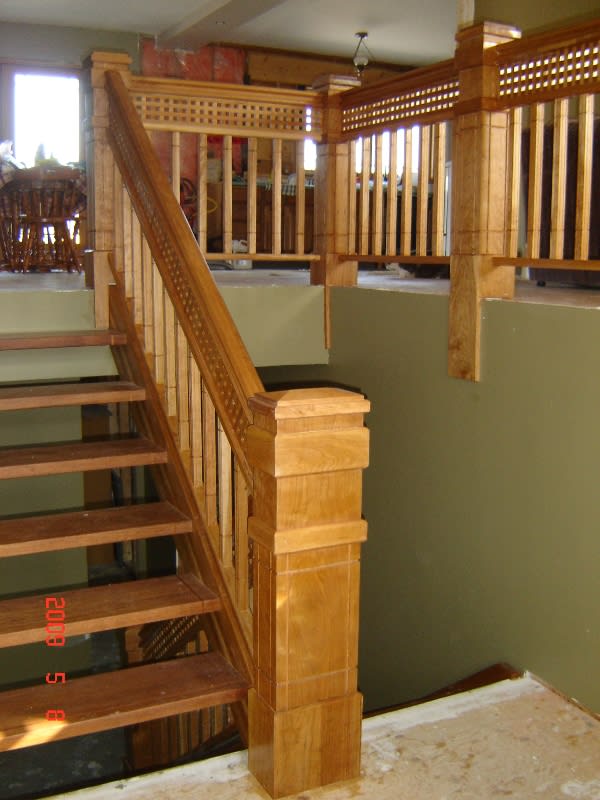Buleeek
Structural
- Sep 5, 2017
- 98
Hi everyone,
I am currently working on residential concrete cantilevered stairs and landing. The architect wants to keep 4" stair thickness, but my calcs show about 1/2" deflection. By changing to 5" thickness I could bring the deflection down to 0.2". I usually do not design concrete cantilevered stairs so I would like to ask more experienced people if I am missing anything in my design (see attached) and if 4"-5" thick stairs make sense at all. Each step is 12" wide. All dimensions are shown on the attached drawing. Thanks for any advise.
I am currently working on residential concrete cantilevered stairs and landing. The architect wants to keep 4" stair thickness, but my calcs show about 1/2" deflection. By changing to 5" thickness I could bring the deflection down to 0.2". I usually do not design concrete cantilevered stairs so I would like to ask more experienced people if I am missing anything in my design (see attached) and if 4"-5" thick stairs make sense at all. Each step is 12" wide. All dimensions are shown on the attached drawing. Thanks for any advise.




![[pipe] [pipe] [pipe]](/data/assets/smilies/pipe.gif)
![[ponder] [ponder] [ponder]](/data/assets/smilies/ponder.gif)